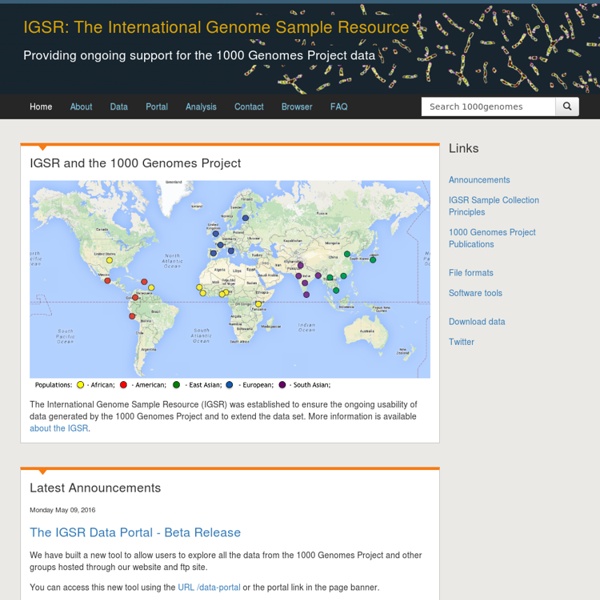



Talking Glossary of Genetic Terms Glossary Home | Text Version Designed to help learners at any level better understand genetic terms Guided by national science standards Explained by scientists at the NIH The National Human Genome Research Institute (NHGRI) created the Talking Glossary of Genetic Terms to help everyone understand the terms and concepts used in genetic research. In addition to definitions, specialists in the field of genetics share their descriptions of terms, and many terms include images, animation and links to related terms. Enter a search term or explore the list of terms by selecting a letter from the alphabet on the left and then select from the terms revealed. The Talking Glossary At the bottom of most pages in the Talking Glossary are links to help you get the most out of this glossary.
MendelWeb Homepage 97.1 Cracking the Code of Life Cracking the Code of Life PBS Airdate: April 17, 2001 ROBERT KRULWICH: When I look at this—and these are the three billion chemical letters, instructions for a human being—my eyes glaze over. But when scientist Eric Lander looks at this he sees stories. ERIC LANDER (Whitehead Institute/MIT): The genome is a storybook that's been edited for a couple billion years. ROBERT KRULWICH: This is the story of one of the greatest scientific adventures ever, and at the heart of it is a small, very powerful molecule, DNA. For the past ten years, scientists all over the world have been painstakingly trying to read the tiny instructions buried inside our DNA. J. FRANCIS COLLINS (National Human Genome Research Institute): This is the ultimate imaginable thing that one could do scientifically...is to go and look at our own instruction book and then try to figure out what it's telling us. ROBERT KRULWICH: And what it's telling us is so surprising and so strange and so unexpected. I'm Robert Krulwich. DR.
Genetic Updata Conferences | SamRhine.com MYCN v-myc myelocytomatosis viral related oncogene, neuroblastoma derived (avian) [Homo sapiens] - Gene result Exploring Genomics Data The Genomics Explorers provide an iterative way for students to choose strategies for asking and addressing biologically interesting questions using a range of genomics tools. Select which Explorer you wish to explore: The Genomics Explorer helps students: become inspired about biology develop a literature-based understanding of important quantitative approaches, define interesting questions that can be addressed with data, make connections between genes and their biological functions, analyze and critically evaluate bioinformatic data, connect bioinformatic analyses with wet lab and field experiments, develop and test a viable hypothesis by bringing together the literature, classroom knowledge, and analysis of data. Supported by National Science Foundation grants DEB 0746571 and DUE 0837375, Teagle Foundation Fresh Thinking Grant, Vassar College, and Cofactor Genomics .